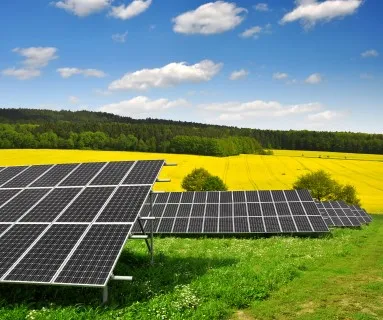
Asia set to become global capital for solar power by 2050
As renewables take over the world’s energy mix, the region will continue to grow its global PV capacity at full speed.
Large-scale solar farms have become a more common sight in Asia over the last few years. Technology costs have been decreasing significantly to the point that analysts forecast that by 2050, photovoltaic (PV) systems will cost a measly $0.42 per watt or as much as 43-54% less than today’s price tag. This has sent Asian countries on a construction spree as they aim to hit ambitious renewables targets and meet the growing energy demand in the region.
China and Vietnam are now Asia’s brightest solar spots, with China expected to add over 300GW of solar capacity by 2021. Analysts from Fitch Solutions report that this is part of more than 700GW of global solar power capacity that will be added in the next eight years, or almost 150% expansion in global solar capacity.
As Asia and countries like the United States, Spain, and Brazil gear up for a solar boom, total installed solar capacity will likely overtake total installed wind capacity within the next two years. Fitch Solutions forecasts that over the next ten years, the biggest names in solar will in fact be China, the United States and India.
Markets to watch
China is now a mainstay in renewable energy headlines around the world amidst its aggressive takeover of sectors such as solar, offshore wind, and hydropower. Last year, solar power in China became cheaper than electricity supplied by the national grid through coal power. This means that over the next few years, solar power will likely find its way to the industrial and commercial space.
Meanwhile, Vietnam’s high solar irradiation levels will soon be leveraged to meet a 4GW solar capacity target for 2025 and a 12GW target for 2030. To move closer to the target, the country invested in Southeast Asia’s first large-scale floating solar project, a 47.5MW facility in Vietnam’s Da Mi plant. Jackie B. Surtani, ADB’s director of Infrastructure Finance - East Asia, Southeast Asia and the Pacific, said that the project was financed on a non-sovereign basis and completed in two years.
“This is relatively new for Southeast Asia. It's quite straightforward, and so it's not overly complex. DHD, which is a subsidiary of an EVN subsidiary called GenCo-1, has three large hydro projects which have been in operation for a considerable period of time. They've decided to put this floating solar on one of their reservoirs and it actually only takes up around 8% of one of the reservoirs. What it does is that it increases the overall output during the dry seasons where the hydro plant will not be running,” Surtani said.
Taiwan, on the other hand, developed its largest ground-mounted solar project the same year, the result of an IPP’s goal to minimise its ecological impact. Singapore-based Vena Energy won a competitive tender to build a solar project on an abandoned salt product farm in Chiayi.
Called Mingus, Vena Energy’s 70MW project will help achieve Taiwan’s 20GW renewables target by 2025. “We worked with local and international banks to finance the project which is particularly attractive as it is the first large-scale solar project tender by the government, and the Mingus Solar Project was the largest ground-mounted development when the tender was introduced in 2017,” said Sam Ong, group CEO and country manager of Taiwan, Vena Energy.
The challenge of land
Whilst many countries have encouraging regulatory and physical environments where solar power can thrive, others are not as lucky. Singapore, for example, does not have as much land as Vietnam or India, so the government has resorted to artificial islands, solar generation facilities, and vertical solar installations to achieve the goal.
Analysts at Fitch Solutions reported that Singapore’s solar sector will expand over the next decade, as the government moves away from thermal energy and upholds its Paris Agreement pledge to reduce emissions intensity by 36% below 2005 levels. The transition to solar is perfect for Singapore, which has an annual solar irradiance of 1,580kWh/m2/year, 50% greater than neighbouring temperate countries and highly suitable for the deployment of PV cells.
“Solar energy can be harvested through floating solar farms, the installation of solar panels on rooftops and via solar energy imports. Various policies have been implemented to promote growth of the sector – for example, the Energy Market Authority of Singapore (EMA) had lowered the fixed component of the licence fee for larger generators (ranging from 10MW to 400MW), reducing the cost of installation of solar panels,” analysts at Fitch Solutions said.
On the other hand, whilst India does have the land for solar power, a complicated regulatory environment has made it difficult to implement solar projects at the ideal pace. According to JMK Research Analytics, a bloated bureaucracy requires 6-9 months to procure land for solar or wind projects. Other states may even stretch this to 18-24 months, making it an extremely costly endeavour.
Due to this challenge, many states have already instituted a single window clearance mechanism to improve land acquisition. Project delays now stem from other issues, such as the lack of a formal policy to allocate land in some key states, the non-agricultural conversion of land, and delay in registration under the Solar Park scheme, amongst others.
“As land is a state subject, there is a need for better coordination between state and central
government agencies whilst evaluating and announcing tenders. The expected due dates should match the reality on the ground. Digitisation of land records is the key to streamline and expedite the land allotment process, thereby reducing any chance of stalling of projects due to legal hurdles. Lastly, to speed up the process of approvals and permissions, the number of agencies involved should be minimised or a better coordination among these agencies has to be established,” analysts at JMK Research Analytics said.
No two markets are the same
Developers have to recognise that despite almost similar physical environments, each market in Asia is significantly distinct. Surtani said that Asia is not like Europe or the US, where projects can be proposed in general terms.
“If you come into Vietnam and you say, I want a project with the structure that is exactly what I got in the US or Europe, you're not going to get it, you have to be flexible. You have to adapt to various local governments, local cultures, and local regulations and make it work,” she explained.
Going forward, however, countries will be in the same direction as they explore large-scale floating solar. Surtani said that due to the issue of land, floating solar projects will eventually make sense for most governments and will be a significant point of interest in the next few years.
“I have seen personally that Indonesia is planning something like a 200MW floating solar project. Even in the Philippines, I believe there is a small pilot system project here already. I think countries are beginning to explore this as a concept. I think you'll see a lot more of this going forward,” Surtani added.

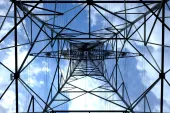

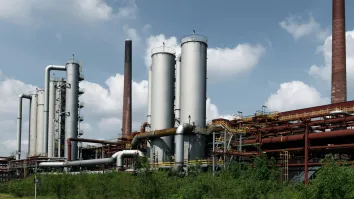
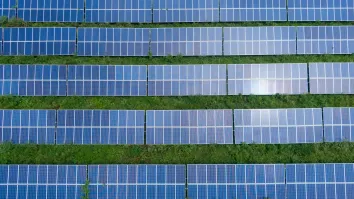
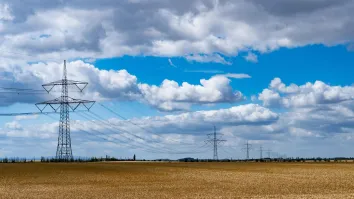













 Advertise
Advertise






